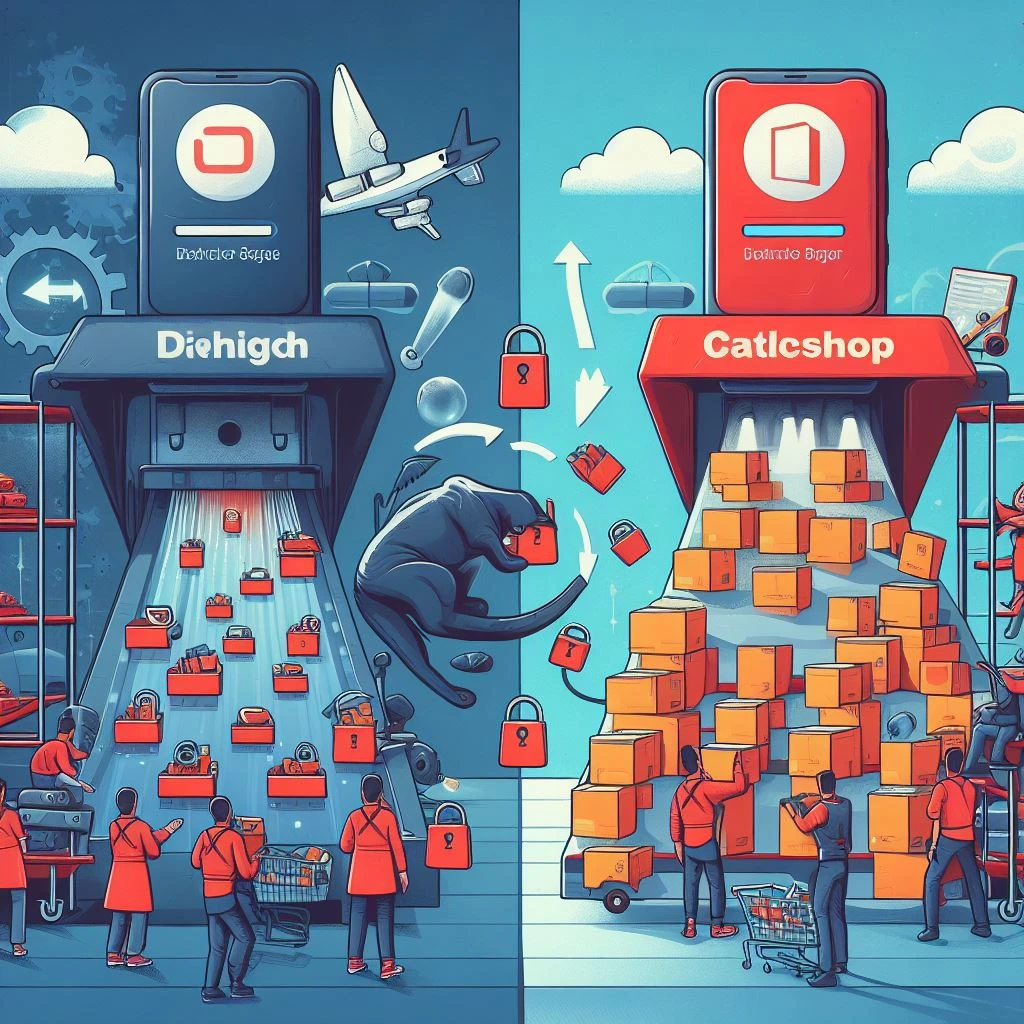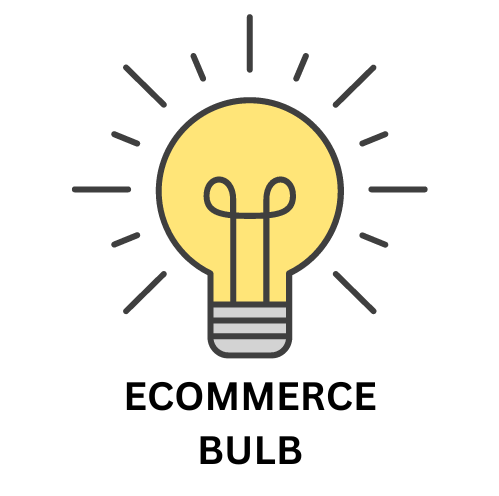In order to decide which ecommerce platform to use, WooCommerce vs Shift4shop. A detailed comparison between features must be thoroughly done. If you want to decide which eCommerce platform to choose, there are many things to consider.
These are some examples of these factors:
- Cost.
- SEO friendliness.
- Page load speed.
- Canonical website URL.
- Indexing Control.
- Customizable HTML capabilities.
- Sitemap Generator.
- Integration with Google Analytics.
- Product Tagging and Categorization.
- Batch Uploading.
- Mobile Optimization.
- Built-in Blogging and Marketing Features.
- Social Sharing Buttons.
- Content Management Capabilities.
- Discount and promotion code tools.
- Easy to use Checkout.
- Reporting tools and custom reports.
- Integration of email marketing tools.
- Multiple payment options.
- Flexibility to add new eCommerce features.
- Exclusive features.
- Cons and pros.
Here we’ll discuss these factors to help you decide which platform is better for you, Shift4shop or WooCommerce. And at the end of the discussion, we’ll recap and make a comparison for the scores of all these points to find out which eCommerce platform has the higher score, so that you’ll have a good view about both of them.
Pricing (WooCommerce Vs Shift4shop):

WooCommerce vs Shift4shop Pricing – WooCommerce vs Shift4shop Cost – woocommerce vs shift4shop review
Both WooCommerce and Shift4Shop offer various pricing plans tailored to different business needs and requirements. Here’s a detailed breakdown of their pricing structures:
WooCommerce Pricing
WooCommerce is an open-source platform, making it fundamentally free to use. However, associated costs arise from hosting, domain names, payment processing, plugins, and themes.
- Hosting: Hosting costs vary depending on the provider and the amount of storage and bandwidth needed. Expect to pay anywhere from $3.95 to $999 per month for hosting.
- Domain Name: A domain name typically costs around $10 per year.
- Payment Processing: Transaction fees range from 2% to 3% of the transaction amount, depending on the payment gateway used.
- Plugins: WooCommerce offers a vast ecosystem of free and paid plugins, extending the platform’s functionality. Paid plugins typically cost around $50 to $300 per year.
- Themes: WooCommerce offers a variety of free and paid themes, ranging from $0 to $200 or more.
Shift4Shop Pricing
Shift4Shop offers a tiered pricing structure with monthly fees and transaction fees:
- End-to-End Ecommerce ($99/month): Ideal for businesses starting out, providing unlimited products, staff accounts, storage, and bandwidth.
- Basic ($199/month): Includes all features of the End-to-End plan, plus additional features like abandoned cart recovery, product filtering, and advanced reporting.
- Standard ($299/month): Includes all features of the Basic plan, plus advanced SEO tools, social media marketing tools, and customer support via phone, email, and chat.
- Plus ($399/month): Includes all features of the Standard plan, plus a dedicated account manager and priority customer support.
- Enterprise (Custom Quote): Tailored to large businesses with high-volume sales, offering customized features and pricing based on specific needs.
Transaction Fees
Both WooCommerce and Shift4Shop charge transaction fees for each sale processed through their platform. These fees are typically a percentage of the transaction amount, plus a fixed fee.
- WooCommerce: Transaction fees vary depending on the payment gateway used, but they typically range from 2% to 3% of the transaction amount plus 30 cents.
- Shift4Shop: Transaction fees are 2.9% of the transaction amount plus 30 cents for all plans.
Here is a pricing comparison table of WooCommerce and Shift4Shop:
| Feature | WooCommerce | Shift4Shop |
|---|---|---|
| Monthly Fee | Free | Starts at $99/month |
| Transaction Fees | 2.9% + 30¢ | 2.9% + 30¢ |
| Annual Sales Volume | Unlimited | Unlimited |
| Products | Unlimited | Unlimited |
Overall Summary
WooCommerce is a free, open-source eCommerce platform that offers a wide range of features and customization options. However, it does require some technical expertise to set up and manage. Shift4Shop is a hosted eCommerce platform that offers a more user-friendly interface and built-in marketing tools. However, it is more expensive than WooCommerce.
SEO Capabilities (WooCommerce vs Shift4shop):

Shift4shop vs WooCommerce vs WordPress – SEO Capabilities comparison table summary (WooCommerce vs Shift4shop)
Sure, here is a summary table comparing the SEO capabilities of WooCommerce and Shift4Shop:
| Feature | WooCommerce | Shift4Shop |
|---|---|---|
| On-page SEO optimization | Basic | Advanced |
| Meta data management | Basic | Advanced |
| Image optimization | Basic | Advanced |
| Schema markup | Limited | Extensive |
| Sitemap generation | Manual | Automatic |
| SEO plugin integration | Extensive | Built-in |
Overall Summary
Shift4Shop offers more advanced SEO capabilities than WooCommerce, including built-in SEO tools, extensive schema markup, and automatic sitemap generation. However, WooCommerce offers a vast ecosystem of SEO plugins that can extend its functionality.
Choosing the Right Platform for SEO
If you are serious about SEO, Shift4Shop’s built-in SEO tools and advanced features may be worth the extra cost. However, if you are on a tight budget, WooCommerce can still be a good option with the help of SEO plugins.
Here is a more detailed breakdown of the SEO capabilities of each platform:
WooCommerce SEO Capabilities
WooCommerce provides basic on-page SEO optimization features, such as meta title and description management. However, it relies on SEO plugins to provide more advanced features, such as schema markup, image optimization, and keyword optimization.
Shift4Shop SEO Capabilities
Shift4Shop offers built-in SEO tools that provide advanced features, such as schema markup, image optimization, and local SEO optimization. It also automatically generates a sitemap for your store, which helps search engines crawl your website more effectively.
PageLoad Speed (WooCommerce Vs Shift4shop):

WooCommerce vs Shift4shop Review Page Load Speed (WooCommerce Vs Shift4shop):
Here’s a comparison table summarizing the page load speed of WooCommerce and Shift4Shop:
| Feature | WooCommerce | Shift4Shop |
|---|---|---|
| Page load speed | Varies based on hosting, theme, and plugins | Consistent and optimized page load speed |
| Performance optimization tools | Limited | Built-in performance optimization tools |
| Cache management options | Requires plugins | Built-in cache management |
| Content delivery network (CDN) integration | Requires plugins | Built-in CDN integration |
Overall Summary
Shift4Shop generally offers faster and more consistent page load speed compared to WooCommerce. This is due to its optimized infrastructure, built-in performance optimization tools, and integrated CDN. However, WooCommerce can also achieve good page load speed with proper optimization and plugin usage.
Factors Affecting Page Load Speed
Several factors can affect the page load speed of both WooCommerce and Shift4Shop:
- Hosting: Choosing a reliable and high-performance hosting provider is crucial for fast page load times.
- Theme: A lightweight and well-coded theme can significantly improve page load speed.
- Plugins: Installing too many plugins or using resource-intensive plugins can slow down your store.
- Image Optimization: Optimizing product images for web can reduce their file size and improve loading speed.
- Cache Management: Caching frequently accessed data can reduce server load and improve page load times.
- Content Delivery Network (CDN): Using a CDN can distribute your store’s content across multiple servers, reducing latency and improving load times for global visitors.
Canonical Website URL (WooCommerce Vs Shift4shop):

Shift4shop vs WooCommerce vs WordPress – Canonical Website URL (WooCommerce Vs Shift4shop)
Here’s a comparison table summarizing the canonical website URL handling of WooCommerce and Shift4Shop:
| Feature | WooCommerce | Shift4Shop |
|---|---|---|
| Canonical URL implementation | Requires plugins | Built-in canonical URL generation |
| Canonical URL control | Limited | Comprehensive control over canonical URLs |
| Duplicate content prevention | Limited | Advanced duplicate content prevention features |
| SEO optimization | Requires additional SEO optimization | Built-in SEO optimization benefits |
Overall Summary
Shift4Shop provides built-in canonical URL generation and comprehensive control over canonical tags, effectively preventing duplicate content and enhancing SEO optimization. In contrast, WooCommerce requires plugins to implement canonical URLs and offers limited control over these tags.
Canonical URL Significance
Canonical URLs are crucial for search engines, indicating the preferred version of a web page. They prevent search engines from indexing multiple versions of the same page, ensuring that the correct version is ranked and displayed in search results.
WooCommerce Canonical URL Implementation
WooCommerce doesn’t have built-in canonical URL generation, requiring plugins like Yoast SEO or Rank Math to implement this feature. These plugins provide varying levels of control over canonical URLs.
Shift4Shop Canonical URL Management
Shift4Shop excels in canonical URL management, offering built-in canonical URL generation and comprehensive control over these tags. It automatically assigns canonical URLs to product pages, category pages, and other relevant pages, ensuring that search engines recognize the preferred version.
Indexing Control (WooCommerce Vs Shift4Shop):

WooCommerce vs Shift4shop – Indexing Control comparison summary & table (WooCommerce Vs Shift4Shop)
Here’s a comparison table summarizing the indexing control capabilities of WooCommerce and Shift4Shop:
| Feature | WooCommerce | Shift4Shop |
|---|---|---|
| Indexing control options | Limited | Comprehensive indexing control |
| Robots.txt management | Manual | Built-in robots.txt editor |
| Meta robots tag control | Limited | Granular control over meta robots tags |
| Sitemap generation | Manual | Automatic sitemap generation |
| Search engine submission | Requires manual submission | Built-in search engine submission tools |
Overall Summary
Shift4Shop offers more comprehensive indexing control options compared to WooCommerce. It provides built-in tools for managing robots.txt, controlling meta robots tags, generating sitemaps, and submitting your store to search engines. WooCommerce requires manual management of these aspects.
Indexing Control Significance
Indexing control is crucial for managing how search engines crawl and index your store’s content. It allows you to specify which pages should be indexed, which ones should be excluded, and how search engines should treat specific pages.
WooCommerce Indexing Control
WooCommerce offers limited indexing control options. You can manually modify the robots.txt file to exclude specific pages from indexing, but you’ll need to use third-party plugins to manage meta robots tags and generate sitemaps.
Shift4Shop Indexing Controls
Shift4Shop provides comprehensive indexing control tools. It has a built-in robots.txt editor, granular control over meta robots tags, automatic sitemap generation, and built-in search engine submission tools.
Customizable HTML Capabilities (WooCommerce Vs Shift4shop):

WooCommerce vs Shift4shop Review – Customizable HTML Capabilities (WooCommerce Vs Shift4shop)
| Feature | WooCommerce | Shift4Shop |
|---|---|---|
| HTML injection | Limited | Extensive |
| Template customization | Limited | Extensive |
| Theme editing | Limited | Extensive |
| Custom code integration | Requires plugins | Built-in tools |
Overall Summary
WooCommerce and Shift4Shop offer varying levels of customizable HTML capabilities. WooCommerce provides limited options for direct HTML injection, template customization, and theme editing, often requiring the use of plugins. In contrast, Shift4Shop offers extensive HTML injection, template customization, and theme editing capabilities, empowering users with greater control over their store’s design and functionality.
Sitemap Generators (WooCommerce Vs Shift4shop):

Here is a table summarizing the key differences between WooCommerce and Shift4Shop:
| Feature | WooCommerce | Shift4Shop |
|---|---|---|
| Ease of use | Moderate | Easy |
| Features | Wide range | Limited |
| Pricing | Free | Paid |
| Overall | Powerful and flexible | Easy to use with a wide range of features |
Integration With Google Analytics (WooCommerce Vs Shift4shop):

WooCommerce vs Shift4shop Review – Integration With Google Analytics (WooCommerce Vs Shift4shop)
| Feature | WooCommerce | Shift4Shop |
|---|---|---|
| Integration with Google Analytics | WooCommerce integrates seamlessly with Google Analytics, allowing you to track your website traffic and performance. | Shift4Shop also integrates with Google Analytics, but it is not as seamless as WooCommerce integration. You may need to do some manual configuration to get it working properly. |
| Tracking capabilities | WooCommerce provides comprehensive tracking capabilities, including page views, product views, add-to-carts, purchases, and more. | Shift4Shop provides basic tracking capabilities, but it does not offer as much detail as WooCommerce. |
| Reporting | WooCommerce provides detailed reports that you can use to analyze your website traffic and performance. | Shift4Shop provides basic reports, but they are not as detailed as WooCommerce reports. |
| Overall | WooCommerce is the better choice for businesses that need comprehensive integration with Google Analytics. | Shift4Shop is a good choice for businesses that need basic integration with Google Analytics. |
Here is a table summarizing the key differences between WooCommerce and Shift4Shop in terms of Google Analytics integration:
| Feature | WooCommerce | Shift4Shop |
|---|---|---|
| Integration with Google Analytics | Seamless | Requires manual configuration |
| Tracking capabilities | Comprehensive | Basic |
| Reporting | Detailed | Basic |
| Overall | Better for comprehensive integration | Good for basic integration |
Product Tagging and Categorization (WooCommerce Vs Shift4shop):

Product Tagging and Categorization (WooCommerce Vs Shift4shop)
| Feature | WooCommerce | Shift4Shop |
|---|---|---|
| Product tagging | WooCommerce allows you to add an unlimited number of tags to your products. Tags can be used to organize your products, making it easier for customers to find them. | Shift4Shop allows you to add up to 100 tags to your products. Tags can be used to organize your products, but they are not as powerful as WooCommerce tags. |
| Product categorization | WooCommerce allows you to create a hierarchical category structure for your products. This makes it easy for customers to browse your products by category. | Shift4Shop allows you to create a flat category structure for your products. This makes it more difficult for customers to browse your products by category. |
| Product filtering | WooCommerce allows customers to filter your products by tag, category, price, and other attributes. This makes it easy for customers to find the products they are looking for. | Shift4Shop allows customers to filter your products by tag, category, and price. However, it does not allow customers to filter by other attributes. |
| Overall | WooCommerce is the better choice for businesses that need a powerful and flexible product tagging and categorization system. | Shift4Shop is a good choice for businesses that need a basic product tagging and categorization system. |
Here is a table summarizing the key differences between WooCommerce and Shift4Shop in terms of product tagging and categorization:
| Feature | WooCommerce | Shift4Shop |
|---|---|---|
| Product tagging | Unlimited tags | Up to 100 tags |
| Product categorization | Hierarchical structure | Flat structure |
| Product filtering | Filter by tag, category, price, and other attributes | Filter by tag, category, and price |
| Overall | Better for powerful and flexible system | Good for basic system |
Batch Uploading (WooCommerce Vs Shift4shop):

Shift4shop vs WooCommerce Review – Batch Uploading (WooCommerce Vs Shift4shop)
| Feature | WooCommerce | Shift4Shop |
|---|---|---|
| Batch uploading | WooCommerce supports batch uploading of products via CSV files. This can save you a lot of time if you have a large number of products to add to your store. | Shift4Shop also supports batch uploading of products via CSV files. However, its process is not as straightforward as WooCommerce’s. |
| Product data mapping | WooCommerce allows you to map your CSV file data to your store’s product attributes. This ensures that your products are uploaded with the correct information. | Shift4Shop also allows you to map your CSV file data to your store’s product attributes. However, its mapping process is not as user-friendly as WooCommerce’s. |
| Error handling | WooCommerce provides detailed error reports that you can use to troubleshoot any problems with your batch uploads. | Shift4Shop provides basic error reports, but they are not as detailed as WooCommerce’s. |
| Overall | WooCommerce is the better choice for businesses that need a powerful and reliable batch uploading solution. | Shift4Shop is a good choice for businesses that need a basic batch uploading solution. |
Here is a table summarizing the key differences between WooCommerce and Shift4Shop in terms of batch uploading:
| Feature | WooCommerce | Shift4Shop |
|---|---|---|
| Batch uploading support | Yes | Yes |
| Ease of use | Easy | Moderate |
| Error handling | Detailed reports | Basic reports |
| Overall | Better for powerful and reliable solution | Good for basic solution |
Mobile Optimization (WooCommerce Vs Shift4shop):

Here is a table summarizing the key differences between WooCommerce and Shift4Shop in terms of mobile optimization:
| Feature | WooCommerce | Shift4Shop |
|---|---|---|
| Mobile-responsive themes | Wider selection | More limited selection |
| Mobile-optimized checkout | More user-friendly | Less user-friendly |
| Mobile analytics | More detailed | Less detailed |
| Overall | Better for powerful mobile optimization | Good for basic mobile optimization |
Built-in Blogging & Marketing Features (WooCommerce Vs Shift4shop):

Built-in Blogging & Marketing Features (WooCommerce Vs Shift4shop)
Here is a summary table comparing the built-in blogging and marketing features of WooCommerce and Shift4Shop:
| Feature | WooCommerce | Shift4Shop |
|---|---|---|
| Built-in blogging platform | Yes | Yes |
| Easy-to-use blog editor | Yes | Yes |
| Customizable blog templates | Yes | Yes |
| Built-in email marketing tools | No, but can be integrated with third-party plugins | Yes |
| Social media marketing tools | Yes, but limited | Yes |
| Search engine optimization (SEO) tools | Yes, but limited | Yes |
| Overall | Good for basic blogging and marketing | Good for basic blogging and marketing, with some additional features |
Here is a more detailed comparison of the built-in blogging and marketing features of WooCommerce and Shift4Shop:
Built-in blogging platform
Both WooCommerce and Shift4Shop have built-in blogging platforms that allow you to create and publish blog posts directly from your store’s dashboard. The built-in blogging platforms are easy to use and offer a variety of features, including:
- A WYSIWYG editor for creating and editing blog posts
- Customizable blog templates
- The ability to schedule blog posts to be published later
- The ability to add images and videos to blog posts
- The ability to categorize and tag blog posts
Easy-to-use blog editor
The built-in blog editors in both WooCommerce and Shift4Shop are easy to use, even for beginners. The editors are WYSIWYG, which means that you can see your changes in real time as you make them. The editors also offer a variety of formatting options, such as bold, italics, and headings.
Customizable blog templates
Both WooCommerce and Shift4Shop offer a variety of customizable blog templates that you can use to create a unique look for your blog. The templates can be customized with your own colors, fonts, and layouts.
Built-in email marketing tools
Shift4Shop has built-in email marketing tools that allow you to create and send email newsletters to your customers. WooCommerce does not have built-in email marketing tools, but you can integrate it with third-party plugins, such as MailChimp or Sendinblue.
Social media marketing tools
Both WooCommerce and Shift4Shop have social media marketing tools that allow you to connect your store with your social media accounts. You can use these tools to share your products and blog posts, and to track your social media engagement.
Search engine optimization (SEO) tools
Both WooCommerce and Shift4Shop have SEO tools that can help you improve your store’s ranking in search engine results pages (SERPs). The SEO tools include:
- The ability to add meta titles and descriptions to your products and blog posts
- The ability to create XML sitemaps
- The ability to track your store’s SEO performance
Social Sharing Buttons Availability (WooCommerce Vs Shift4shop):

Here is a summary table comparing the availability of social sharing buttons in WooCommerce and Shift4Shop:
| Feature | WooCommerce | Shift4Shop |
|---|---|---|
| Built-in social sharing buttons | Yes | Yes |
| Customizable social sharing buttons | Yes | Yes |
| Ability to share products on social media | Yes | Yes |
| Ability to share blog posts on social media | Yes | Yes |
| Overall | Good for social sharing | Good for social sharing |
Here is a more detailed comparison of the availability of social sharing buttons in WooCommerce and Shift4Shop:
Built-in social sharing buttons
Both WooCommerce and Shift4Shop have built-in social sharing buttons that allow your customers to share your products and blog posts on their social media accounts. The built-in buttons are easy to use and can be displayed in a variety of locations on your store, such as product pages, blog posts, and the checkout page.
Customizable social sharing buttons
Both WooCommerce and Shift4Shop allow you to customize the appearance of your social sharing buttons. You can choose from a variety of button styles and colors, and you can also add your own custom buttons for social media platforms that are not supported by the built-in buttons.
Ability to share products on social media
Both WooCommerce and Shift4Shop allow your customers to share your products on their social media accounts. Customers can share products using the built-in social sharing buttons, or they can share products directly from product pages.
Content Management Capabilities (WooCommerce Vs Shift4shop):

Content Management Capabilities (WooCommerce Vs Shift4shop)
Sure, here is a summary table comparing the content management capabilities of WooCommerce and Shift4Shop:
| Feature | WooCommerce | Shift4Shop |
|---|---|---|
| Content management system | Self-hosted | Fully hosted |
| Ease of use | Moderate | Easy |
| Content types | Pages, posts, products, custom post types | Pages, posts, products |
| Content editing | WYSIWYG editor | WYSIWYG editor |
| Media management | Upload and manage images, videos, and other files | Upload and manage images, videos, and other files |
| Content organization | Categories, tags, custom taxonomies | Categories, tags |
| Content versioning | Yes | No |
| Content scheduling | Yes | Yes |
| Content SEO optimization | Built-in SEO tools | Built-in SEO tools |
| Content collaboration | Multi-user support with role-based permissions | Multi-user support with role-based permissions |
| Overall | Good for flexible and powerful content management | Good for basic content management |
Overall
WooCommerce is a good choice for businesses that need a flexible and powerful content management system. Shift4Shop is a good choice for businesses that need a basic content management system that is easy to use.
Discounts & Promotion Codes (WooCommerce vs Shift4shop):

Shift4shop vs WooCommerce vs WordPress -Discounts & Promotion Codes (WooCommerce vs Shift4shop)
Here is a summary table comparing the discounts and promotion code capabilities of WooCommerce and Shift4Shop:
| Feature | WooCommerce | Shift4Shop |
|---|---|---|
| Discounts | Create a variety of discounts, including percentage discounts, fixed-amount discounts, and free shipping discounts. | Create a variety of discounts, including percentage discounts, fixed-amount discounts, and free shipping discounts. |
| Promotion codes | Create and manage promotion codes that can be applied to orders. | Create and manage promotion codes that can be applied to orders. |
| Scheduling | Schedule discounts and promotion codes to run at specific times or dates. | Schedule discounts and promotion codes to run at specific times or dates. |
| Targeting | Target discounts and promotion codes to specific customers or groups of customers. | Target discounts and promotion codes to specific customers or groups of customers. |
| Reporting | Track the performance of your discounts and promotion codes with detailed reports. | Track the performance of your discounts and promotion codes with detailed reports. |
| Overall | Good for flexible and powerful discounts and promotion codes | Good for basic discounts and promotion codes |
Here is a more detailed comparison of the discounts and promotion code capabilities of WooCommerce and Shift4Shop:
Discounts
Both WooCommerce and Shift4Shop allow you to create a variety of discounts, including:
- Percentage discounts: Discounts a percentage off the total order value.
- Fixed-amount discounts: Discounts a fixed amount off the total order value.
- Free shipping discounts: Offer free shipping on orders that meet certain criteria.
Promotion codes
Both WooCommerce and Shift4Shop allow you to create and manage promotion codes that can be applied to orders. Promotion codes can be used to redeem discounts, free shipping, or other offers.
Scheduling
Both WooCommerce and Shift4Shop allow you to schedule discounts and promotion codes to run at specific times or dates. This allows you to create limited-time offers or to schedule discounts to coincide with specific events, such as a new product launch or a holiday sale.
Targeting
Both WooCommerce and Shift4Shop allow you to target discounts and promotion codes to specific customers or groups of customers. This allows you to reward your most loyal customers or to target discounts to specific customer segments, such as first-time purchasers or customers who have abandoned their carts.
Reporting
Both WooCommerce and Shift4Shop provide detailed reports that allow you to track the performance of your discounts and promotion codes. These reports can help you to see which discounts are performing well and which ones need to be adjusted or discontinued.
Overall
WooCommerce is a good choice for businesses that need flexible and powerful discounts and promotion codes. Shift4Shop is a good choice for businesses that need basic discounts and promotion codes.
Easy to Use Checkout (WooCommerce Vs Sshift4shop):

WooCommerce vs Shift4shop Review – Easy to Use Checkout (WooCommerce Vs Sshift4shop)
Here is a summary table comparing the easy-to-use checkout capabilities of WooCommerce and Shift4Shop:
| Feature | WooCommerce | Shift4Shop |
|---|---|---|
| Checkout process | Multi-step checkout process with progress indicator | One-page checkout process |
| Guest checkout | Allow customers to checkout without creating an account | Allow customers to checkout without creating an account |
| Payment gateways | Supports a wide variety of payment gateways | Supports a wide variety of payment gateways |
| Shipping options | Real-time shipping rates from major carriers | Real-time shipping rates from major carriers |
| Tax calculation | Automatic tax calculation based on customer location | Automatic tax calculation based on customer location |
| Order confirmation | Email and SMS order confirmation | Email and SMS order confirmation |
| Overall | Good for a customizable and flexible checkout process | Good for a simple and easy-to-use checkout process |
Here is a more detailed comparison of the easy-to-use checkout capabilities of WooCommerce and Shift4Shop:
Checkout process
WooCommerce uses a multi-step checkout process with a progress indicator that shows customers how far along they are in the checkout process. Shift4Shop uses a one-page checkout process that is simpler and easier to use.
Guest checkout
Both WooCommerce and Shift4Shop allow customers to checkout without creating an account. This makes it easier for customers to checkout quickly and easily.
Order confirmation
Both WooCommerce and Shift4Shop send email and SMS order confirmations to customers. This helps to ensure that customers receive their order information and are able to track their order status.
Overall
WooCommerce is a good choice for businesses that need a customizable and flexible checkout process. Shift4Shop is a good choice for businesses that need a simple and easy-to-use checkout process.
Reporting Tools and Custom Reports (WooCommerce vs Sel):

WooCommerce vs Shift4shop Review – Reporting Tools and Custom Reports (WooCommerce vs Shift4shop)
Here is an overview of the reporting tools and custom reports capabilities of WooCommerce vs Shift4shop:
Reporting Tools
Both WooCommerce and Shift4Shop offer built-in reporting tools that allow you to track your store’s performance. However, WooCommerce offers more powerful and flexible reporting tools than Shift4Shop.
WooCommerce’s reporting tools include:
- Sales reports: Track your total sales, revenue, and average order value.
- Product reports: Track your best-selling products, product categories, and product inventory.
- Customer reports: Track your customer acquisition, customer retention, and customer lifetime value.
- Marketing reports: Track your website traffic, conversion rates, and marketing campaign performance.
Shift4Shop’s reporting tools include:
- Sales reports: Track your total sales, revenue, and average order value.
- Product reports: Track your best-selling products and product categories.
- Customer reports: Track your customer acquisition and customer retention.
Custom Reports
Both WooCommerce and Shift4Shop allow you to create custom reports using third-party reporting plugins or tools. However, WooCommerce is more flexible than Shift4Shop when it comes to creating custom reports.
WooCommerce allows you to create custom reports using a variety of methods, including:
- WooCommerce’s built-in query builder: Create custom reports without writing any code.
- Third-party reporting plugins: Use third-party plugins to create more complex custom reports.
- Custom SQL queries: Create custom reports using custom SQL queries.
Shift4Shop allows you to create custom reports using a limited number of methods, including:
- Shift4Shop’s built-in report builder: Create custom reports using a limited set of fields and filters.
- Third-party reporting tools: Use third-party reporting tools to create more complex custom reports.
Overall
WooCommerce is a better choice for businesses that need powerful and flexible reporting tools. Shift4Shop is a good choice for businesses that need basic reporting tools.
Here is a table summarizing the key differences between WooCommerce and Shift4Shop in terms of reporting tools and custom reports:
| Feature | WooCommerce | Shift4Shop |
|---|---|---|
| Built-in reporting tools | More powerful and flexible | Less powerful and flexible |
| Custom reports | More flexible | Less flexible |
| Overall | Better for powerful and flexible reporting | Good for basic reporting |
Integration of Email Marketing Tools (WooCommerce Vs Shift4shop):

Integration of Email Marketing Tools (WooCommerce Vs Shift4shop)
Here is a summary table comparing the integration of email marketing tools in WooCommerce and Shift4shop:
| Feature | WooCommerce | Shift4Shop |
|---|---|---|
| Built-in email marketing tools | No | Yes |
| Easy integration with third-party email marketing tools | Yes | Yes |
| Ability to segment email lists | Yes | Yes |
| Ability to create targeted email campaigns | Yes | Yes |
| Ability to track email campaign performance | Yes | Yes |
| Overall | Good for flexible email marketing with third-party integration | Good for basic email marketing with built-in tools |
Overall
WooCommerce is a good choice for businesses that need flexible email marketing with third-party integration. Shift4Shop is a good choice for businesses that need basic email marketing with built-in tools.
Multiple Payment Options (WooCommerce Vs Shift4shop):

Multiple Payment Options (WooCommerce Vs Shift4shop)
Here is a summary table comparing the multiple payment options offered by WooCommerce and Shift4shop:
| Feature | WooCommerce | Shift4Shop |
|---|---|---|
| Number of supported payment gateways | Wide variety of payment gateways, including PayPal, Stripe, Authorize.net, and more | Wide variety of payment gateways, including PayPal, Stripe, Authorize.net, and more |
| Payment processing fees | Competitive payment processing fees | Competitive payment processing fees |
| International payment options | Supports international payments in over 200 countries and territories | Supports international payments in over 200 countries and territories |
| Alternative payment methods | Supports a variety of alternative payment methods, such as Apple Pay, Google Pay, and Amazon Pay | Supports a variety of alternative payment methods, such as Apple Pay, Google Pay, and Amazon Pay |
| Overall | Good for a wide variety of payment options and competitive fees | Good for a wide variety of payment options and competitive fees |
Overall
Both WooCommerce and Shift4Shop offer a wide variety of payment options and competitive fees. The best platform for you will depend on your specific needs and requirements.
Flexibility to Add New eCommerce Features (WooCommerce Vs Shift4shop):

Flexibility to Add New eCommerce Features (WooCommerce Vs Shift4shop)
Here is a summary table comparing the flexibility to add new eCommerce features in WooCommerce and Shift4Shop:
| Feature | WooCommerce | Shift4Shop |
|---|---|---|
| Extensible plugin architecture | Extensive plugin architecture with over 58,000 extensions available | Limited plugin architecture with fewer extensions available |
| Custom code development | Supports custom code development for advanced functionality | Limited support for custom code development |
| Third-party integrations | Easily integrates with a wide range of third-party apps and services | Limited integrations with third-party apps and services |
| Overall | Highly flexible for adding new eCommerce features | Less flexible for adding new eCommerce features |
Exclusive Features (WooCommerce vs Shift4shop):

Both WooCommerce and Shift4shop offer a range of features to help you create and manage a successful online store. However, there are also some exclusive features that are unique to each platform.
WooCommerce Exclusive Features
- Extensive plugin library: WooCommerce boasts a vast library of over 58,000 extensions that can be used to add new features and functionalities to your store. This extensive plugin ecosystem makes WooCommerce highly customizable and adaptable to a wide range of business needs.
- Custom code development: WooCommerce allows for custom code development, providing developers with the freedom to create tailored solutions and modify existing extensions. This level of customization empowers you to achieve specific functionalities that may not be readily available through plugins.
- Easy integration with third-party apps and services: WooCommerce seamlessly integrates with a wide array of third-party apps and services, including marketing automation platforms, CRM systems, accounting software, and more. This integration capability streamlines your eCommerce operations and connects your store with various tools.
Shift4shop Exclusive Features
- Built-in email marketing tools: Shift4shop provides built-in email marketing tools that allow you to create and send email newsletters, segment your email lists, and track email campaign performance. This eliminates the need for third-party email marketing plugins.
- Advanced inventory management: Shift4shop offers advanced inventory management features, including inventory tracking, stock alerts, and low-stock notifications. These features help you maintain accurate inventory levels and avoid stockouts.
- Integrated payment processing: Shift4shop integrates seamlessly with its own payment processing platform, Shift4 Payments, providing a streamlined payment experience for both merchants and customers. This integration simplifies payment processing and reduces transaction fees.
Here’s a summary table highlighting the key exclusive features of each platform:
| Feature | WooCommerce | Shift4shop |
|---|---|---|
| Plugin library | Extensive | Limited |
| Custom code development | Supported | Restricted |
| Third-party app integrations | Easy | Limited |
| Built-in email marketing | No | Yes |
| Advanced inventory management | Yes | More advanced |
| Integrated payment processing | No | Yes |
Market Share (WooCommerce Vs Shift4shop):

Market Share (WooCommerce Vs Shift4shop)
Determining the exact market share of WooCommerce and Shift4shop can be challenging due to varying methodologies and data sources. However, based on available industry reports and estimates, WooCommerce consistently holds a significantly larger market share compared to Shift4shop.
According to a 2023 report by Statista, WooCommerce holds the leading position in the global eCommerce platform market share, with an estimated share of 26.9%. This means that WooCommerce powers nearly one-third of all online stores worldwide.
In comparison, Shift4shop’s market share is considerably smaller. While exact figures vary, estimates suggest that Shift4shop’s market share hovers around 1-2%. This indicates that WooCommerce has a much broader adoption and usage among online merchants.
Cons Of WooCommerce Vs Shift4shop:

Downsides Of WooCommerce Vs Shift4shop
Both WooCommerce and Shift4shop are popular eCommerce platforms with their own set of advantages and disadvantages. While the choice between the two depends on your specific needs and requirements, it’s important to consider the potential downsides of each platform before making a decision.
WooCommerce Downsides
- Requires more technical expertise: WooCommerce, being an open-source platform, requires more technical expertise to set up, configure, and maintain. This may involve managing hosting, installing plugins, and addressing security updates.
- Potential for plugin conflicts: With a vast plugin library, there’s a possibility of plugin conflicts or compatibility issues that can affect your store’s performance. Careful plugin selection and compatibility testing are crucial.
- Higher maintenance costs: Due to its self-hosted nature, WooCommerce may incur higher maintenance costs, including hosting fees, plugin licenses, and potential developer fees for customizations.
Shift4shop Downsides
- Limited customizability: Shift4shop offers a more limited plugin ecosystem compared to WooCommerce, restricting your ability to add specific features or functionalities through third-party extensions.
- Restricted custom code development: Shift4shop provides limited support for custom code development, making it more challenging to implement advanced customizations or tailored solutions.
- Higher upfront costs: Shift4shop typically involves higher upfront costs, including monthly subscription fees, setup fees, and transaction fees. This may be less cost-effective for smaller businesses.
Here’s a summary table highlighting the key downsides of each platform:
| Feature | WooCommerce | Shift4shop |
|---|---|---|
| Technical expertise required | High | Low |
| Potential plugin conflicts | Yes | Less likely |
| Maintenance costs | Higher | Lower |
| Customizability | More flexible | Less flexible |
| Custom code development | Easier | More restricted |
| Upfront costs | Lower | Higher |
Hidden Charges / Cost & Fees (WooCommerce Vs. Shift4shop):

WooCommerce vs Shift4shop Review – Hidden Charges / Cost & Fees (WooCommerce Vs. Shift4shop)
Both WooCommerce and Shift4shop have a pricing structure that includes both upfront costs and ongoing fees. Here’s a breakdown of the hidden charges and associated costs for each platform:
WooCommerce Hidden Charges and Ongoing Fees
- Hosting costs.
- Plugin costs.
- Developer fees.
- Payment processing fees.
Shift4shop Hidden Charges and Ongoing Fees
- Monthly subscription fees.
- Setup fees.
- Transaction fees.
- Additional fees.
Here’s a summary table comparing the hidden charges and ongoing fees for each platform:
| Feature | WooCommerce | Shift4shop |
|---|---|---|
| Hosting costs | Yes | No |
| Plugin costs | May apply | No |
| Developer fees | May apply | No |
| Payment processing fees | Yes | Yes |
| Monthly subscription fees | No | Yes |
| Setup fees | No | May apply |
| Additional fees | May apply | May apply |
What are the forte of eCommerce Platforms (WooCommerce vs Shift4shop)?
Both WooCommerce and Shift4shop are popular eCommerce platforms with their own set of strengths and weaknesses. Here’s a summary of the key strengths or forté of each platform:
WooCommerce Strengths
- Open-source and self-hosted.
- Extensive plugin library.
- Flexibility and extensibility.
- Large user base and community.
Shift4shop Strengths
- Easy to use and set up.
- Built-in email marketing tools.
- Advanced inventory management.
- Integrated payment processing.
Conclusion (Comparison Table for WooCommerce Vs Shift4shop):
As we can see from the detailed comparison between these two platforms (WooCommerce Vs Shift4shop) that the overall score for Shift4shop is better than WooCommerce’s with a slight margin.
In summary, WooCommerce’s strengths lie in its open-source nature, flexibility, extensive plugin library, and large user community. Shift4shop’s strengths lie in its user-friendliness, built-in email marketing tools, advanced inventory management, and integrated payment processing. The choice between the two platforms depends on your specific needs, priorities, and technical capabilities.
Note that the comparison was done with eCommerce and online business in mind.
I hope this could give you the required insight to choose which eCommerce Platform to use for your future projects!
Here is the full comparison between WooCommerce & Shift4shop eCommerce platforms:
| eCommerce Platform | WooCommerce | Shift4shop |
|---|---|---|
| Price | 9.0 | 9.1 |
| SEO Friendliness | 8.0 | 9.2 |
| Page Load Speed | 7.0 | 9.2 |
| Canonical Website URL | 8.5 | 9.1 |
| Indexing Control | 8.0 | 9.3 |
| Customizable HTML capabilities | 9.5 | 9.7 |
| Sitemap Generator | 8.5 | 8.2 |
| Integration With Google Analytics | 8.5 | 8.1 |
| Product Tagging & Categorization | 8.0 | 7.5 |
| Batch Uploading | 8.0 | 7,8 |
| Mobile Optimization | 8.0 | 7.7 |
| Built-in Blogging & Marketing Features | 9.0 | 9.1 |
| Social Sharing Buttons | 9.0 | 8.9 |
| Content Management Capabilities | 8.0 | 7.9 |
| Discount & Promo Code Tools | 8.5 | 8.3 |
| Easy to Use Checkout | 7.5 | 7.4 |
| Reporting Tools & Custom Reports | 9.5 | 9.2 |
| Integration of Email Marketing Tools | 8.5 | 8.7 |
| Multiple Payment Options | 9.0 | 9.0 |
| Flexibility to Add New eCommerce Features | 9.0 | 8.4 |
| Exclusive Features | 7.5 | 7.5 |
| Market Share | 9.5 | 8.0 |
| CONS & PROS | 7.5 | 7.7 |
| Forte | 9.0 | 9.0 |
| Hidden Fees & Charges | 7.0 | 6.8 |
| Overall Assessment (Average) | 8.4 | 8.5 |


Leave a Reply